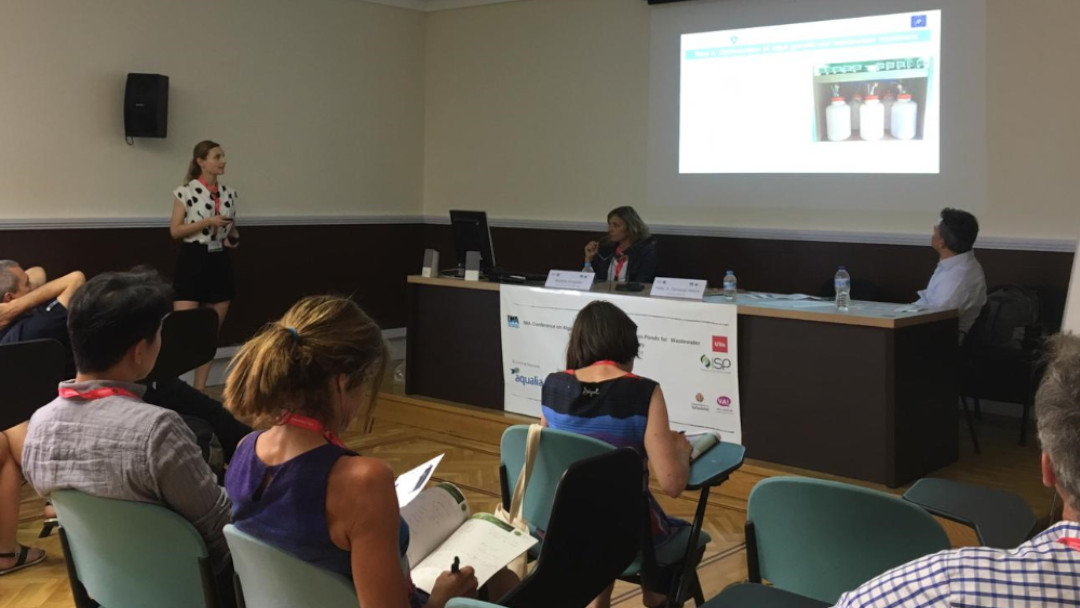On July 1 and 2, the University of Valladolid (Uva) hosted the IWAlgae 2019 congress, an event that included the II Congress of the International Water Association on Algal Technologies for the Treatment of Wastewater and Resource Recovery and the XII Congress of the Specialist Group of the International Water Association in Wastewater Pond Technology.
The event has brought together scientists, algaeneers and practitioners to exchange the latest knowledge on the application of photosynthetic microorganisms for wastewater treatment and resource recovery, covering traditional opened ponds systems and the use of photobioreactors.
The CARTIF technology centre has contributed its bit by sharing its knowledge in this field, based on its activity in the LIFE ALGAECAN project, of which it is the coordinator. The objective of this initiative is to develop a demonstration plant for a model of sustainable treatment of wastewater from the fruit and vegetable processing industry, through the profitable cultivation of heterotrophic microalgae. This will allow to obtain high quality effluents that can be reused (for example, in irrigation and cleaning) or discharges into streams, while reducing the cost of processing fruits and vegetables and eliminating the environmental impact associated with the generation of waste in the form of sludge, as is the case of traditional aerobic treatment systems and their usual landfilling.
Throughout the event, the main topics discussed were:
• Advances in wastewater pond technology (cases of study and fundamental research).
• Alga-bacteria-phatogen/virus interactions.
• Algae downstream processing to valuable products.
• Algae-based biorefineries.
• Algal-Bacterial interactions and microbial ecology.
• Algal-bacterial photo-bioreactors/ponds for wastewater treatment.
• Biofuels from photosynthetic microorganisms.
• Experimental methods, algal respirometry, monitoring, modeling and process control.
• Harvesting technologies.
• Life cycle assessment.
• Macroalgae-based technologies.
• Molecular mechanism for carbon and nitrogen uptake.
• Purple photosynthetic bacteria-based Wastewater Treatment.
• Waste gas treatment and greenhouse gas capture (including biogas upgrading).
The treatment of wastewater with photosynthetic microorganisms can benefit from the knowledge derived from the use of algae to produce biofuels, food supplements or ecological pharmaceutical products and the microbial physiology of the photosynthetic bacteria of purple color. Similarly, wastewater as a cheap source of nutrients and inorganic carbon hold promise for the mass production of algae-based products. For example, microalgae-based treatment systems in developing and tropical countries can reduce the costs of wastewater treatment by recovering their inherent resources, while providing effective sanitation services.
This congress has provided a unique platform for analysis and discussion of the latest scientific developments and practical applications in a field of research that has increased exponentially in the past decade. The figures speak for themselves: the number of publications on the use of microalgae for wastewater treatment has increased from 60 in 2007 to more than 1000 in 2017.
